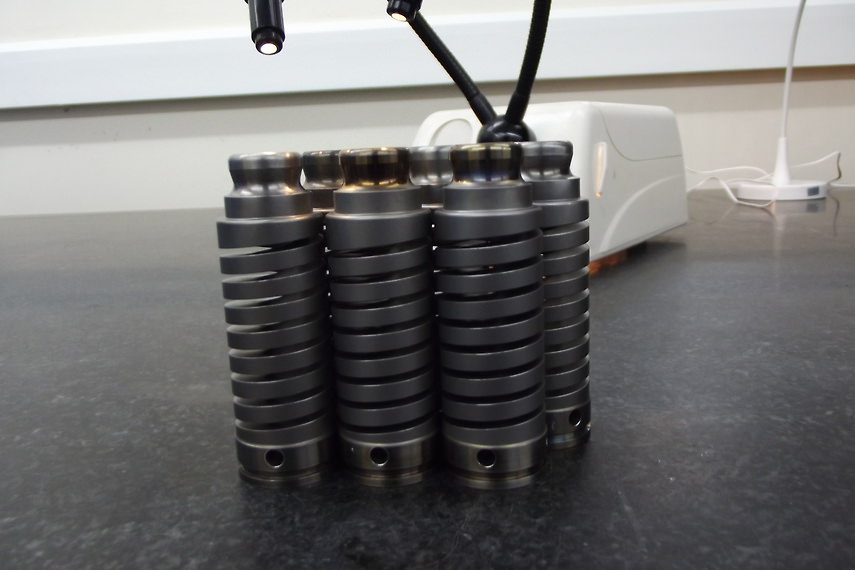Chas Blatchford and Sons manufactures prosthetic knee and ankle joints. In 2011, the firm asked The Engineering Quest to develop a heavy-duty titanium spring with the same dimensional characteristics as an existing carbon steel spring.
We were originally asked to grind the spring slot, following the same method as the carbon steel version. But since both titanium and the component itself are inherently unsuited to the grinding process, we decided to use a conventional milling process with some unconventional features.
A conventional milling process with some unconventional features.
Our plan was to carry out controlled trials with one of our cutting tool supply partners. Together we developed a hypothetical machining process and set up a series of experiments – adjusting our plan as each set of results came in. The second set of trials produced a positive result.
Our Quality Path tool allowed us to focus on key areas and assign resources to each element. Risk assessment was carried out using a Process, Product, Person (PPP) evaluation. We used our Single Component Assessment Tool during the prototype stages and our Productionised Component and Process Validation tool for full production.
Part of our remit was to design a manufacturing process that was commercially viable.
Designing a commercially-viable manufacturing process requires a pricing point and a good understanding of customer requirements. Our preferred method is Design for Manufacture, but since the design was already established, we used best practice to reduce costs.
Due to the volume of parts we needed to focus on automation and reduce handling and the length of process changeovers. We used single minute exchange of die (SMED) and value stream mapping VSM alongside our own Product Realisation system and the resources of our Product Development Team to produce an industry-leading result.
Prototype to Production
Producing a working example inside four weeks involved several prototype stages. Once we had proved and validated the process, we needed to manufacture a fully functional spring, and overcome problems with material stability, variability and stresses.
After initial testing, the customer specified an additional shot peening operation that released additional material stresses and moved the part outside the drawing limits. This necessitated further upstream processing and tighter tolerances.
We now had a finished batch of correct parts and a repeatable process, but the commercial grade material used for the second batch produced different results. We overcame this by using an aircraft grade material.
In developing the new spring, the Engineering Quest played a key role in creating a prosthetic device that mimics the weight and movement of an able-bodied limb and will enhance the mobility and comfort of amputees throughout the world.

